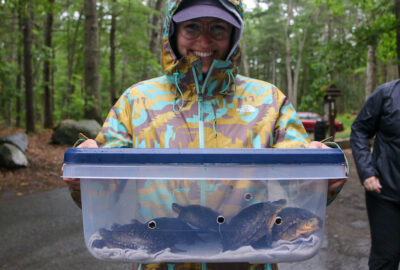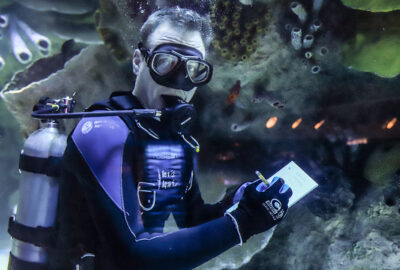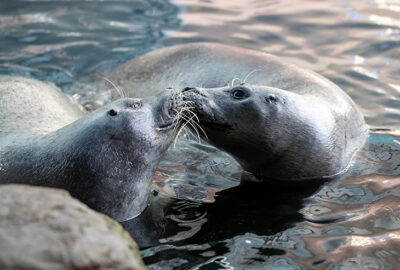Welcome, Peepsqueak!
Aquarium Staffer Rescues Injured Bird from the Beach
By New England Aquarium on Tuesday, March 29, 2022


By
Sarah Tempesta, supervisor of Interactive Exhibits at the Aquarium, was anxious to get to the beach. So, she ventured an hour north over Labor Day weekend to enjoy the sun and the waves before autumn’s arrival. But once she got to her destination in York, ME, the day didn’t go as planned. While beachgoers frolicked in the water and walked along the shore’s edge, Tempesta noticed a small bird struggling in the distance.
She recognized the sanderling—or Calidris alba—a small wading bird in the sandpiper family and could tell right away that something was wrong.
“I ended up watching it throughout the day, off and on for hours until I was able to contact a wildlife facility. But it was clear within the first couple of minutes that its wing was injured,” Tempesta recalls. “It [the wing] was bent at a weird angle,” she explains.
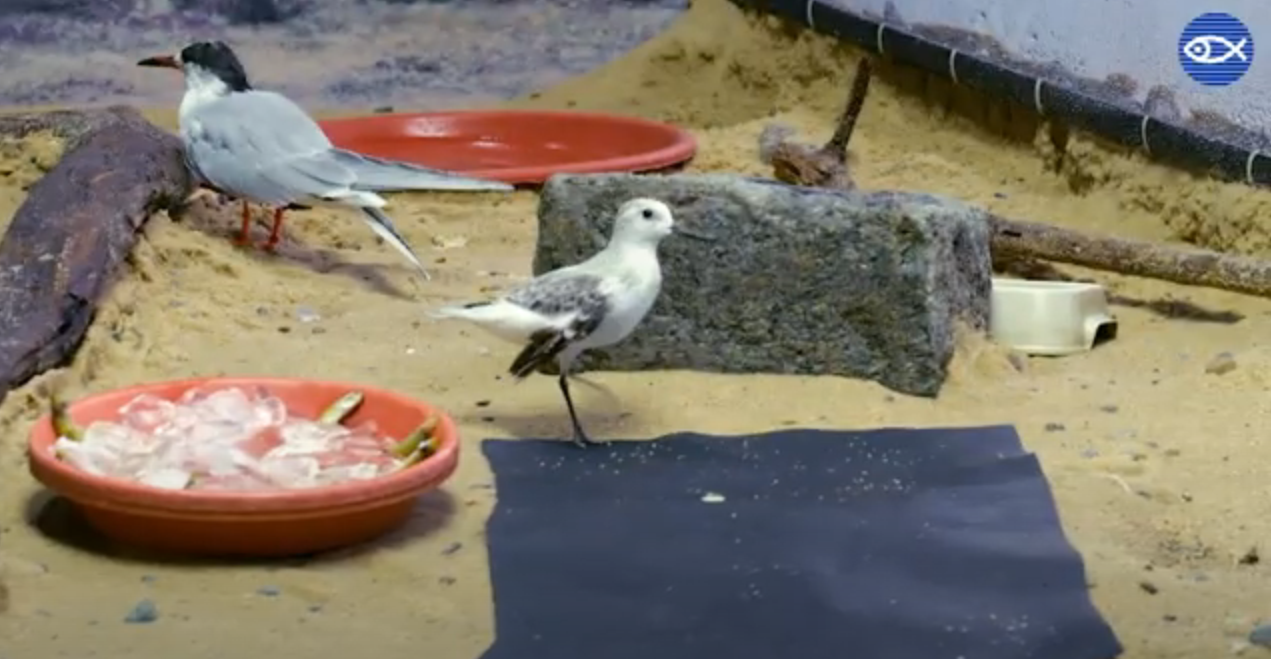
Meet our new sanderling, Peepsqueak!
While on vacation in Maine last year, Aquarist Sarah noticed the injured sanderling and sprang into action to help the bird.
After observing the sanderling for a while, Tempesta grew more concerned and followed the small animal. She wanted to know if it could fly. The sanderling tried to jump onto some rocks, but instead of fluttering to a perch on the stones, the hurt bird missed and fell over.
When she realized it couldn’t fly, Tempesta, who has spent 11 years caring for animals at the Aquarium, jumped into action. First, she called the local wildlife rehabilitation facility, the Center for Wildlife in Cape Neddick, and asked if they could care for the sanderling. Over the phone, a staffer from the center spoke with Tempesta to assess the situation.
It’s rare for a small bird with an injured wing to heal and be released into the wild. With that in mind, Tempesta told the staff at the Center for Wildlife that the New England Aquarium could likely provide the sanderling a long-term home. The center aims to cultivate and strengthen relationships between humans, wildlife, and the environment. Once it was established that the sanderling needed rescue, Tempesta volunteered to bring the animal to the center. The center agreed to take the bird, and Tempesta, who spent years working in the Aquarium’s Shorebird exhibit, caught the sanderling and used a beach cooler with a shirt draped atop to transport it to Cape Neddick.
After a few weeks, the center notified Aquarium staff about the bird’s progress. Though it was recovering well, it was determined that the bird would never be able to fly again, and the center wanted to know if the Aquarium would take the sanderling.
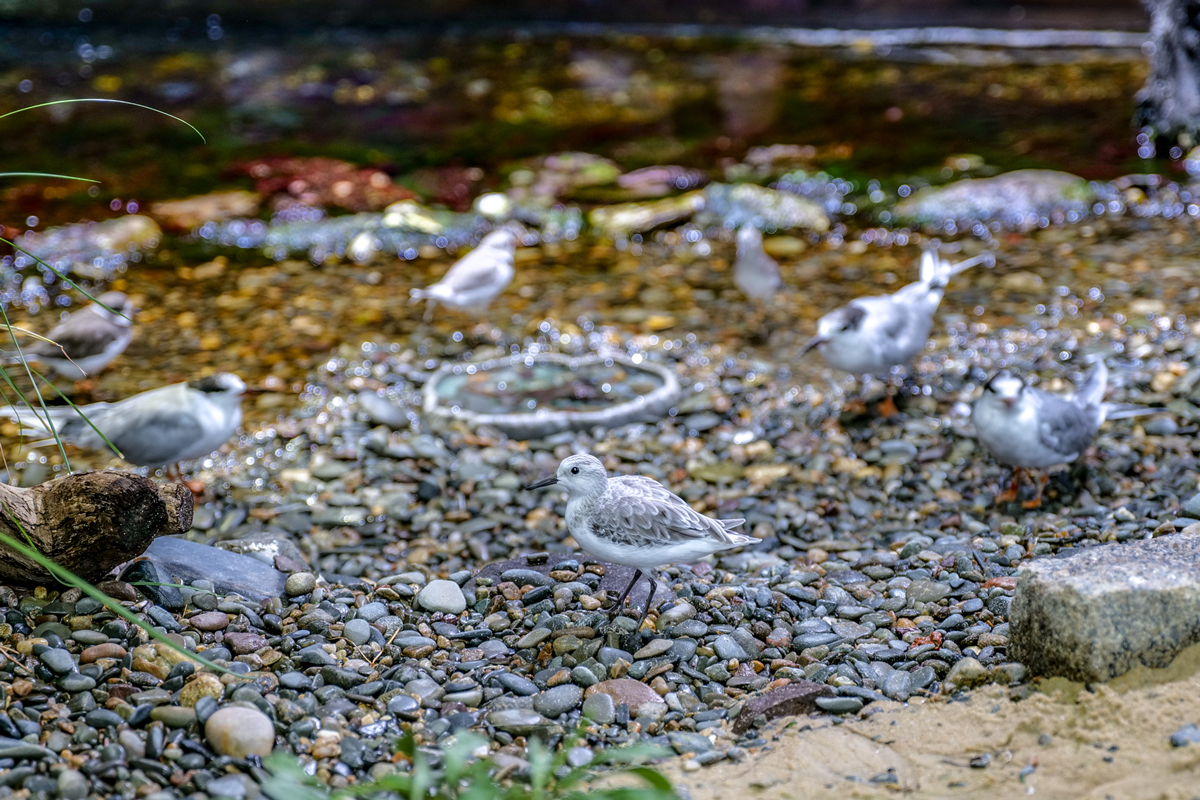
It took some time for the bird to come to the Aquarium, Tempesta says. “We were waiting for U.S. Fish and Wildlife Service permits to transfer the bird across state lines from Maine to Massachusetts because it is a migratory bird, and there are U.S. laws that protect them.”
By February, the sanderling was transported to the Aquarium’s Animal Care Center in Quincy, MA to quarantine, a standard practice in place to ensure the safety of the animals. Last week, the sanderling came to the Aquarium on Central Wharf to join the six other birds across four species that reside in the shorebirds exhibit on level three.
During quarantine, the sanderling settled in immediately and gained weight.
“Right away, the bird began digging in the sand, bathing herself, and looking for food. We helped her adjust to a more normal diet as our team continued her recovery,” said Kristen Ulrich, an aquarist in the Husbandry and Sustainability department.
Aside from the previous wing injury, a staff veterinarian said the bird was healthy.
“The sanderling suffered broken bones near her wrist. While those injuries healed in a few weeks, she has a permanent wing droop that prevents her from flying,” said Senior Veterinarian Dr. Kathy Tuxbury. “We have been very pleased to see how well this bird has adjusted to life at the New England Aquarium.”
So far, the bird—affectionately called Peepsqueak—has interacted well with staff and the resident birds. The shorebirds at the New England Aquarium are rescues that received rehabilitative care and cannot survive in the wild. The Aquarium’s population includes a semipalmated sandpiper, 3 common terns, a semipalmated plover, and a piping plover—a threatened species. While sanderlings have a life expectancy of 10 to 15 years in the wild, they have been known to live into their 20s at the Aquarium.

